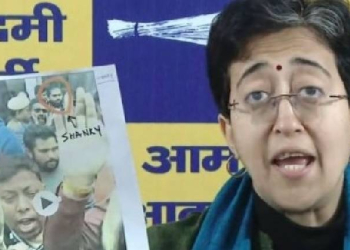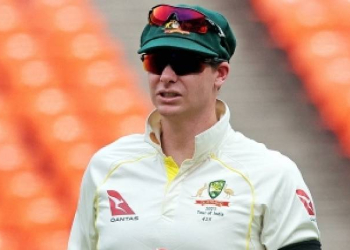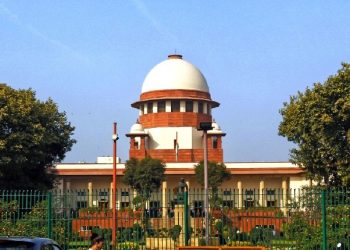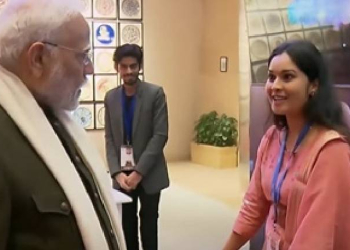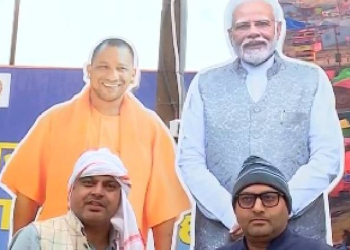New Delhi: Every year air pollution levels spike in the Indo-Gangetic Plain a day after Diwali with grey skies and hard-to-breathe air.
This results from several meteorological factors, the stubble burning in neighbouring states and increased local emissions due to the firecracker use.
Analysis by the NCAP Tracker of data from Central Pollution Control Board’s (CPCB) 33 monitors in Delhi showed that PM 2.5 levels in the capital city this year were lower than in 2021 but continued to be above the daily safe limits of 60 ug/m3.
Data for four monitors was missing and hence has been excluded from the analysis. The highest PM 2.5 levels of 448.8 ug/m3 in the city were recorded at Pusa in Delhi.
However, the air quality index at 8 a.m. on October 25 was higher than its corresponding day and time last year.
According to the CPCB, the average Air Quality Index (of all monitoring stations in Delhi) on the morning after Diwali (October 25) spiked as compared to the morning of Diwali (October 24).
The city’s AQI was 301 at 8 a.m. on October 24. This deteriorated to 326 at the same time on October 25.
This was higher in comparison to the same days in 2021. On November 4, 2021 (Diwali day), the AQI for Delhi was 320. This improved to 317 on the morning of November 5, 2021.
According to the System of Air Quality and Weather Forecasting and Research (SAFAR), the PM 10 and PM 2.5 concentration in the city was 257 ug/m3 and 150 ug/m3, respectively, around 10 a.m.
Around 1.30 p.m, this deteriorated to 295 ug/m3 and 189 ug/m3, respectively. According to the CPCB, daily average safe limits for PM 10 and PM 2.5 are 100 ug/m3 and 60 ug/m3, respectively.
SAFAR’s observations for Delhi around 1 p.m. on Tuesday stated that the overall AQI indicated ‘very poor’ air quality. Fine particles (size less than 2.5 micrometre) contribute 64 per cent to PM10. AQI on Monday night did not deteriorate to ‘severe’ but remained within ‘very poor’.
Fire counts or emissions over the northwest region (share in PM2.5 5-6 per cent) and Diwali firecracker emissions appear to have not affected much Delhi’s air quality.
Local surface winds are moderate on Tuesday 8-16 km per hour, and Wednesday and Thursday calm to 6 km per hour with max temperature of 31-32 degrees Celsius and the minimum at 15 degrees that cause moderate to weak dispersion of pollutants.
Air quality is likely to further improve on Wednesday and Thursday to ‘poor’.
Gufran Beig, project director at SAFAR said, “Around 10 a.m., the Air Quality Index is hovering between 330 and 360. This is the relatively cleanest Diwali week since 2015. There are four specific reasons why the Air Quality remained in check and didn’t go as bad. The first reason is that the wind direction over the stubble fires, which is northwesterly during this period, changed to southwesterly on Monday.
“This region doesn’t have fires, and hence the contribution of the farm fires is minimal at five-eight per cent. Because Diwali is earlier in the winter season, the temperatures are warmer, and wind speeds are high at around 9 km per hour, the accumulation never reaches the saturation level.
“The accumulation remained equal to the ventilation, and hence the worse was over at 2 a.m. During morning, when winds usually become stagnant, it continued to be above 9 km per hour so the ventilation was good. The firecrackers, too, seem to be lesser this year.”
Meteorologists said the conditions were favourable for the pollution levels to remain in check.
Mahesh Palawat, Vice President of Meteorology and Climate Change, Skymet Weather, said, “We usually see hazardous levels of pollution on the day after Diwali, but this year it hasn’t been that bad.”
“While firecrackers contribute to the city’s air pollution, the major factor is the weather. This year, the winds and temperatures were favourable. The winds will continue from the northwest over the next few days, and the pollution levels will lower. It will, however, remain in the poor or very poor category.”
While the lower levels are welcome, there is a need to reduce the use of firecrackers.
Aarti Khosla, Director, Climate Trends, said: “It’s good news from Delhi with significantly lower pollution levels. The crackers ban went up in smoke, but it was the combination of factors — late withdrawal of rains leading to subsequent cleaner air, delayed crop burning and better wind conditions that led to this seemingly improved air quality which we haven’t seen in the last five-six years.
“The levels, however, remained above safe limits. If we as citizens reduce use of firecrackers, we are not only part of solution but also part of living our civilisational legacy.”
(IANS)




